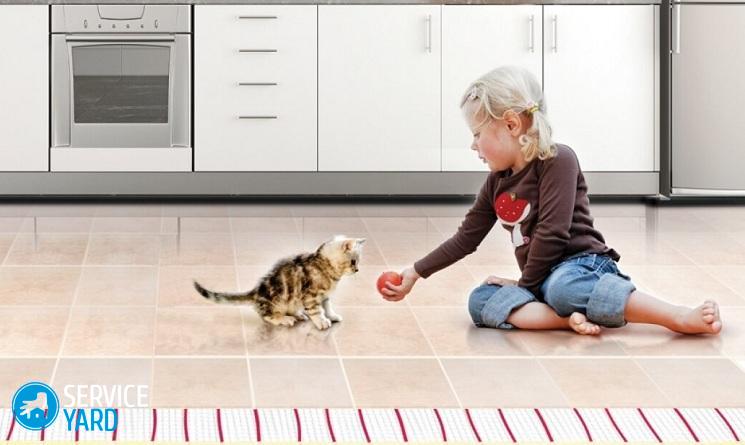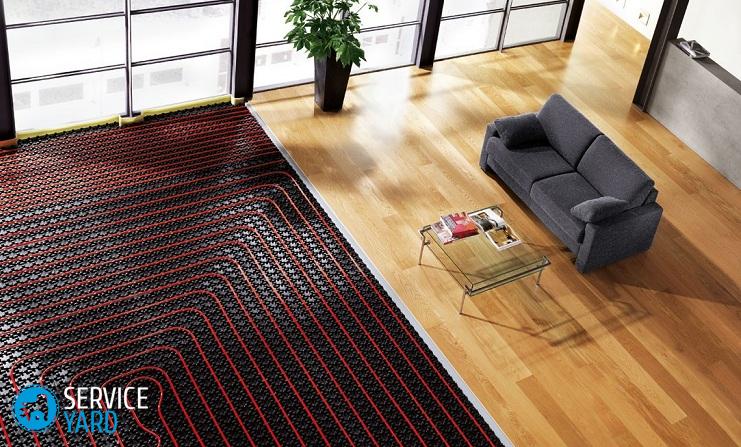Calculation of underfloor heating

Modern heated floors are, first of all, comfort and coziness. Such floors warm the room well, without having a harmful effect on the health and life of people. This can be achieved only if the calculation of the warm floor is made correctly, and the installation was completed without errors. You can use warm water floors as the main or auxiliary source of heating. If a warm floor is considered not as a means of improving the microclimate in the room, but as a source of providing the house with full heat, the scheme will be quite complicated, and the calculation requirements are much stricter.
to contents ↑Initial data
The calculation of the warm floor is based on several characteristics of the room, as well as the customer’s wishes whether the warm floor will be the main or auxiliary source of heat in the house. Important indicators are also:
- appointment;
- footage;
- the shape of the room.
Important! As for the actual execution of calculations of a water heated floor, you can use the online calculator, the services of a specialist or perform the calculation yourself.
In order to independently evaluate the possible heat loss, the following data are needed:
- Types of used building materials.
- Glazing method. In this case, the types of glass and profile are taken into account.
- Average seasonal air temperatures for a given region.
- The use of additional heating methods.
- Floor height.
- The necessary temperature parameters.
- The exact footage.
to contents ↑Important! In addition, take into account the thickness of the floor, the type of insulation, as well as the type of flooring. All this affects how effective the heating system as a whole is.
Calculation of the power of the warm floor: design specifics
It is necessary to calculate the water floor with maximum accuracy. You can correct the mistakes and shortcomings if you completely or partially dismantle the screed. This is not just a costly and time-consuming exercise, but the risk of damaging the finishing materials.
The optimal temperature indicators for various types of floor coverings are as follows (in degrees):
- Parquet - 27.
- Residential premises - 29.
- Bathroom - 33.
- Sites near the outer walls - 35.
If the pipes are not long, then a low-power circulation pump will be enough, the cost of the system will be less:
- The maximum length of the contour, whose diameter is 1.6 cm, is 100 m.
- For 2 - centimeter pipes, a similar figure is 120 m.
The algorithm for calculating the power of a water floor heating
As practice shows, the optimal parameters of a warm floor for heating a room of 10 squares are as follows:
- The length of the circuit is 65 m.
- The diameter of the pipes is 16 mm.
- The minimum pump capacity is 2 l / min.
- The maximum difference between the lengths of the contours is 20%.
- The optimum spacing between the pipes is 15 cm.
Important! It should also be noted that the difference between the temperatures of the surface of the floor and the heat carrier is about 15 degrees.
Technology selection
The best way to lay pipes is the “snail”. In this case, the heat is distributed evenly over the surface, and smooth turns minimize hydraulic losses. If pipes are laid in the zone of external walls, then the optimal laying interval is 10 cm.
Important! Pre-made markings make it possible to perform fastenings accurately and competently.
How to calculate pipes and power?
The data obtained during measurements are used when choosing the power of the equipment used:
- Thermal heating pumps.
- Electric or gas boilers.
Based on these measurements, the optimal spacing between the pipes is determined.
An important point is the material from which the pipes are made:
- Corrosion-proof corrugated material is distinguished by good quality of heat transfer and reliability.
- Copper pipes are distinguished by remarkable heat dissipation, but they have a high cost.
- Crosslinked polyethylene.
- Products made of metal-plastic combine the perfect balance of good performance and budget value.
- Polypropylene is distinguished by a low price and low thermal conductivity.
Important! Specially designed programs for PCs significantly facilitate the calculation of underfloor heating.
Characteristics of the heating system:
- The length of the heating circuit.
- Limit values for heat load.
- Uniform heat distribution.
Important! For spacious rooms, it is advisable to increase the laying distance while increasing the temperature of the coolant. The permissible laying pitch varies between 5 and 60 cm.
The most common combinations of thermal loads with stacking steps:
- 150 mm - heat carrier from 0.8 kW / m2.
- 200 mm - 0.5-0.8 kW / m2.
- 300 mm - less than 0.5 kW / m2.
Draft calculation
It allows you to determine the scenario for using a warm floor (primary or secondary heating source).
The formula will be g (W / m²) = Q (W) / F (m²), where:
- g is the heat flux density;
- Q - the value of the total heat loss in the room;
- F - floor meter.
Important! If you plan to use underfloor heating as an additional tool, the total heat loss can be determined as a percentage or fraction.
When calculating the footage (F), only that part of the room area that is involved in heating is taken into account. In places where furniture and interior items are located, you need to leave free areas of about 0.5 m.
The temperature of the coolant in the circuit is determined by the following formula: ΔТ (° С) = (TR + TO) / 2. Here:
- TR and TO are the values of the temperatures at the entrance to and exit from the heating circuit. If the temperature difference at the inlet and outlet is 5 degrees, then the maximum temperature of the carrier at the feed is 55 degrees.
- After the g and ΔТ values are obtained, according to special tables, the diameter of the pipes and the step of their installation are selected.
Total pipe length
Determining the total length of the pipes involved in the installation of the system is the next step in calculating the warm floor:
- The length of the pipes is found as the quotient of the division of the floor area involved in heating (square meters) by the interval between the pipes (meters). To the resulting figure, add margin for bends and connection to the collector system.
- After the length of the pipeline is known, it is easy to calculate the volume of the coolant and its speed. The latter indicator varies between 0.15 and 1.0 m / s. If the speed turned out to be higher, then the diameter of the pipe should be taken more.
- The choice of the circulation pump depends on the calculated value of the coolant consumption, with a margin of about 20%. This selection principle corresponds to the hydraulic resistance of the system.
to contents ↑Important! Be sure to take into account the condition of the room. For shabby and old houses without high-quality insulation, warm water floors should not be used as the only source of heat.
Stock footage
The quality of the equipped heating depends on how meticulously all the calculations are performed. Calculation of materials for installation of 1 m2 helps to make the cost of materials as reasonable as possible. A correctly performed calculation, in addition, makes it possible to optimize the cash costs of servicing a warm floor.
- How to choose a vacuum cleaner taking into account the characteristics of the house and coatings?
- What to look for when choosing a water delivery
- How to quickly create comfort at home - tips for housewives
- How to choose the perfect TV - useful tips
- What to look for when choosing blinds
- What should be running shoes?
- What useful things can you buy in a hardware store
- Iphone 11 pro max review
- Than iPhone is better than Android smartphones





